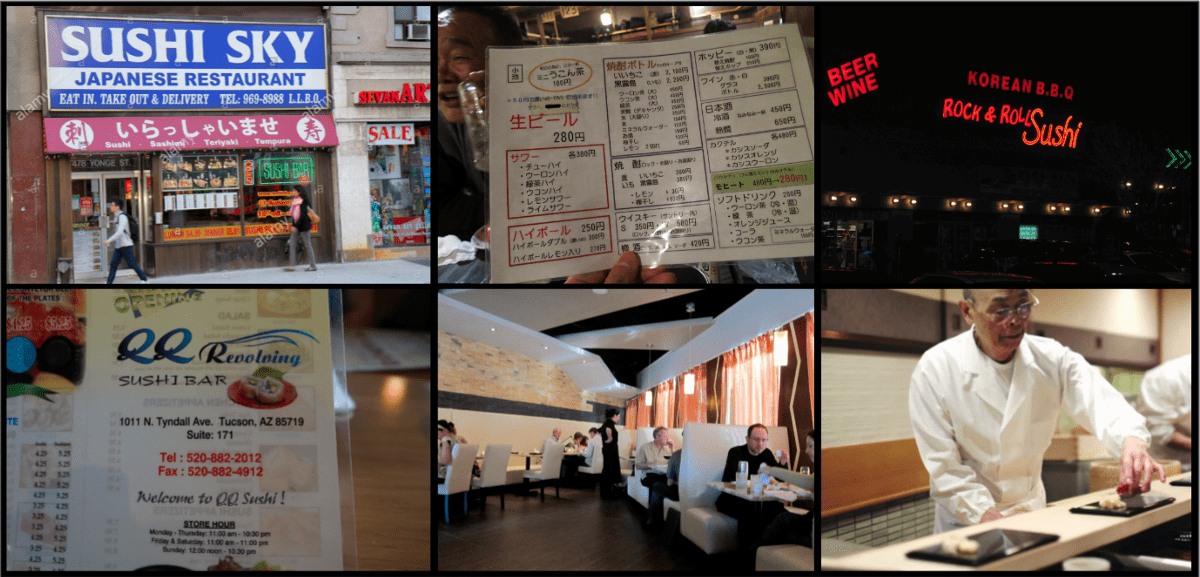Enter through the narrow gate. For the gate is wide and the road is broad that leads to destruction, and there are many who go through it.
Matthew 7:13Going broad is dangerous.
Imagine opening a sushi restaurant catering to both sushi aficionados and sushi newbies. Try to decorate it to be a great date spot and a convenient lunch option. Make it accessible to cost-conscious foodies and jet-setters. Hire staff that can communicate with your Japanese clientele and explain sushi to traveling Swedes. Seat people for 25 minutes and 3 hours. Does this sound feasible?
Not really. I wouldn’t bet on it.
This type of broad focus is known as “going broad” and it is a startup killer. Everything above falls under making “great sushi”, but the devil is in the details. When it comes to startups, how do you know if you’re going too broad?
- You have to produce different marketing material for different buyers
- You find yourself dividing your limited resources among different product lines or value props
- You have a tough time understanding why a particular customer chose your product
- You find it difficult to prioritize work because the data is contradictory
- The features you do release only appeal to a small % of your customers
- Your support team struggles to service a wide variety of use case
- Your customers consider your product both “complicated” and “simple” simultaneously
- You take on service / consulting work to address the many edge cases
- You frequently receive diverse feature requests in the pre-sales process
- You find yourself describing your value proposition as being that of a platform, or a one-stop shop As a startup PM, you’ll be always tempted to go broad. The temptation will be fierce. Personally, you love your product, and you believe everyone should too. It’s awesome to hear about all the compelling use cases people are dreaming up, and all the minor (and major) enhancements they’d need to make it all possible. So your heartstrings are being plucked.
Externally the pressure can be a lot tougher. Take the sushi venture example above. You might find it easy to get all of those people to walk into your restaurant. Signs and marketing do wonders. You’ve expanded your available market to just about everyone. You might find it possible — through major heroics — to please some portion of those people. All of that will make your team euphoric. And once the ball starts rolling it is tough to put the brakes on. But the mess you make in the process will be your undoing.
“Going broad” means trying to address the needs of too many buyer personas, user personas, AND jobs to be done (desired work outcomes). They all matter. Supporting the same user personas to do multiple jobs is difficult. Likewise, supporting different types of users — even those with the same title — to do the same job is equally complex. The tendency is to overgeneralize. You segment by title (“accounts” for example) and perhaps business size (“SMB”), but that’s about it. The differences between accountants working at SMBs are vast.
We tend to model our startups after large enterprises while forgetting that it took those companies many years (and decades in some cases) to support that many product lines and use cases. It didn’t happen overnight. And it certainly didn’t happen while they were trying to fight for their early existence.
The complexity of everything — product development, support, sales, and marketing — increases exponentially with each buyer/user personas added to the mix. No simple change in process will stem this tide.
So what do you do? I know this will be extremely painful and counterintuitive, but get used to saying no much more than you say yes. By much more I’m talking 20x. Say no to prospects, no to feature requests, no to opportunities, no to expansion, and no to new verticals.
This doesn’t mean don’t sell. Sell your heart out. But sell to one target buyer personas and user persona.
And then, on the flipside, get extremely specific about the Who and the Why. By extremely specific I am talking 20x more precise. People will get super nervous because they’ll assume you’re limiting the TAM (total available market) for your product. Rest assured that you’ll be better in the long run.
So: Say No. And Get Specific.
